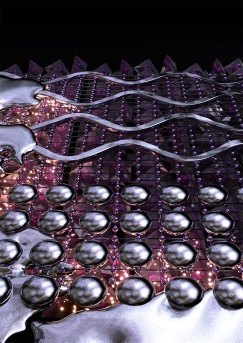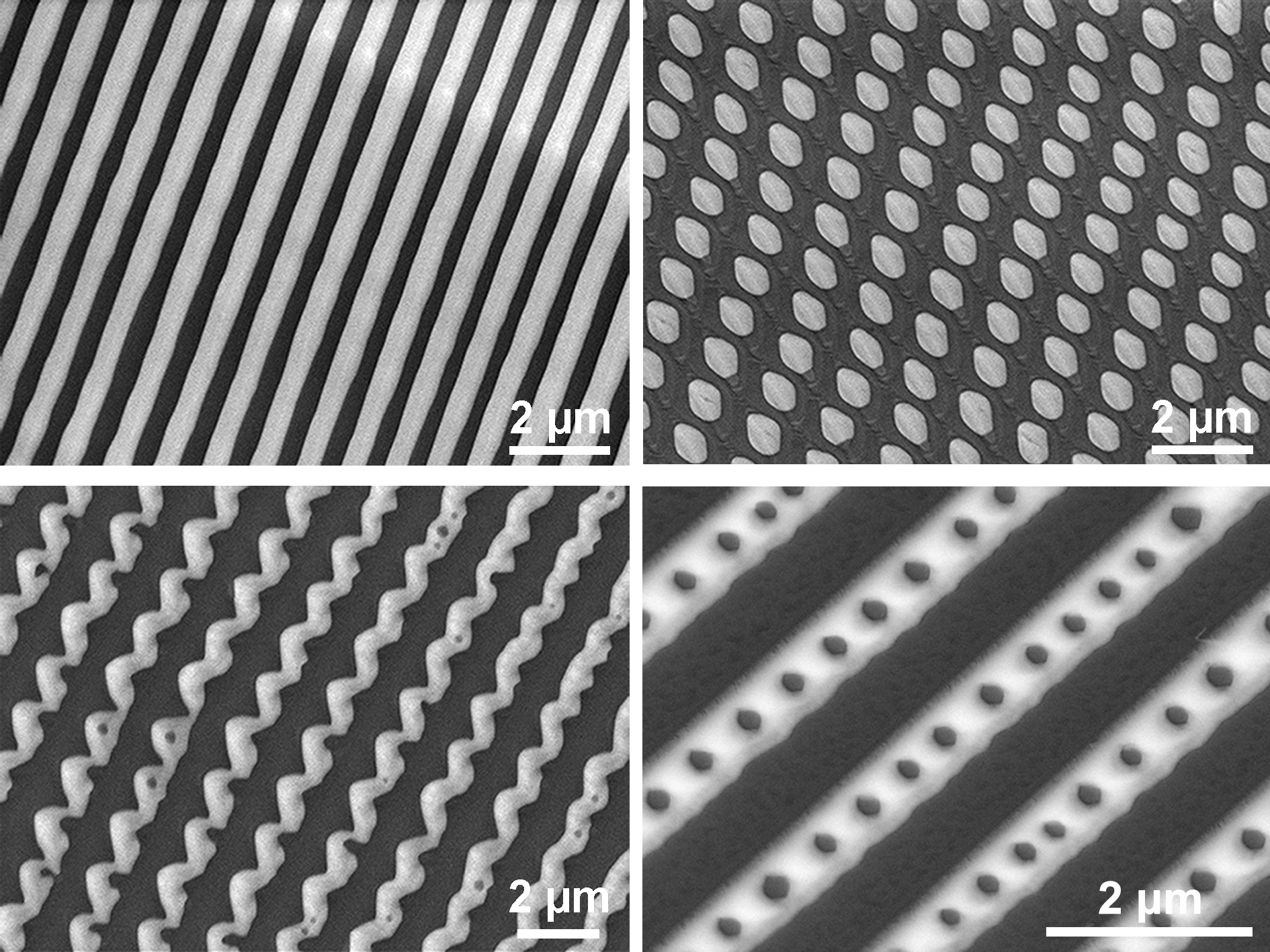Nature paper echoes work of Turing with implications for future electronics, optics and CO2 catalysis.
18 January, 2021

An artists image of how the solidification process allows patterned structures to emerge from the mixture of two metals
Nature Nanotechnology paper echoes work of Turing – using new-found patterns at the nanoscale to control structure and function of materials, with implications for computing and CO2 catalysis, and also for bio-inspired nano-level control/responsive systems.
As those of us who have seen Benedict Cumberbatch as Alan Turing in the 2014 movie ‘The Imitation Game’ will recall, Turing (the father of modern computers) worked on patterns, formalising the mathematics of emergence of patterns in nature. These patterns such as stripes and spots, arise naturally in nature and can be modelled mathematically.
In work published in the journal Nature Nanotechnology, scientists each side of the Tasman have discovered that diverse types of patterns also occur at the surface of solidified metal alloys. The finding has implications for use as a patterning tool for designing metallic structures and creating devices for advanced applications in future electronics, optics and CO2 catalysis.
Researchers from Australia’s FLEET Institute and New Zealand’s MacDiarmid Institute have used experimental and theoretical techniques.
PhD student Steph Lambie admits the work is complicated. “But in this game, the finer details are just as important as the big scale changes,”
MacDiarmid Institute Co-Director Associate Professor Nicola Gaston says that while we often talk about new electronics and what these will mean for our phones and computers (e.g. batteries that last longer, phones that don’t overheat), we seldom dig much deeper to talk about what we’re doing at the atomic level to make this happen.
“And yet our ability to make the nanomaterials needed in electronic devices, or nanostructured catalysts necessary for a low-energy, zero carbon future, is dependent on having precise structural control. The kinds of patterns described in this paper that emerge from natural interactions between atoms are an effective way of forming technologically important structures — and our theoretical modelling is giving us more and more understanding of how to obtain the particular structures that we need.
We’re not just manipulating atoms, we’re exploring the ways they want to interact with each other.”

Some of the patterns obtained in experiment
Associate Professor Gaston welcomed the paper as a significant collaboration between FLEET and the MacDiarmid Institute.
“This paper builds on the extensive collaboration we’ve built over the past few years with FLEET, and which was formalised in 2019 with a partnership agreement.”
The MacDiarmid half of the collaboration, which performed the quantum mechanical modelling of the interactions between atoms needed to understand the results found in the Australian experiments, included PhD student Steph Lambie, AI Dr Krista Steenbergen, and PI Nicola Gaston.
The work is a collaboration by researchers from the University of New South Wales (UNSW) Sydney and the University of Auckland (MacDiarmid Institute), RMIT, and UCLA.
Publication details:
Authors: Jianbo Tang, Stephanie Lambie, Nastaran Meftahi, Andrew J. Christofferson, Jiong Yang, Mohammad B. Ghasemian, Jialuo Han, Francois‐Marie Allioux, Md. Arifur Rahim, Mohannad Mayyas, Torben Daeneke, Chris F. McConville, Krista G. Steenbergen, Richard B. Kaner, Salvy P. Russo, Nicola Gaston, Kourosh Kalantar-Zadeh
Title: Unique surface patterns emerging during solidification of liquid metal alloys
Journal: Nature Nanotechnology
DOI: 10.1038/s41565-020-00835-7


